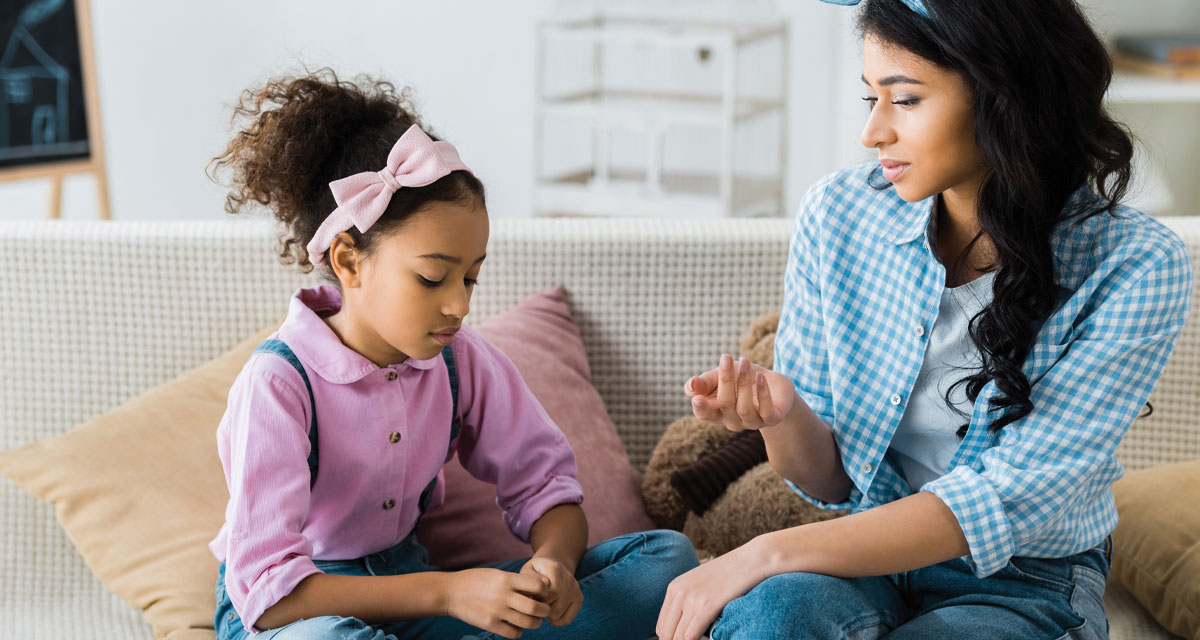Kids are resourceful! With a keen sense of listening and clueing in on keywords, they become aware of tragedies and violence that occur daily in the world. While it may be difficult for adults to engage them in conversation, children are openly talking about their feelings with classmates at lunch, or learning through other avenues such as social media, or adults’ conversations. Rather than wait for questions, open the door and welcome in dialogue. It’s the first step toward easing your child’s worries, while learning the essential facts from you!
Assessing Information
Surveys provide detailed information on the thoughts of children and teens. In our own experiences, the presentation of news can be a continuous line of negativity. Children, ranging from the ages of 10 to 18, have resonated similar feelings of anger, fear, and depression. Starting from the age of seven, most children understand the news is real. Start by asking your children if they know about a current event. Inquiring can create an open dialogue to determine what is either being discussed in school or learned through other avenues. Be prepared, parents! Children process information over time and may ask questions later in the week or when you least expect it—for example, before bedtime!
Listen and Observe
Body language and silence can help parents know their child is perhaps thinking about, but having difficulty expressing, ideas. Encourage communication by asking questions, such as, “Was a person involved?” Starting simply can introduce topics slowly and help the child understand his or her fears. Often, children worry that an event may be close to home and expand that notion into wondering, “Could that happen to me?” Take the time to access a map or globe and share specific locations. Also talk about possible locations for help, such as a nearby city or airport.
Tip: As news media repeat information and graphic images throughout the hour, consider turning off the television after the first viewing.
Tip: School-aged children have difficulty discerning between facts, opinions, and misinformation. It’s the ideal opportunity for older children to invest time reading multiple sources to verify the particulars and derive a point of view.
Answers and Uncertainty
Comfort comes from the act of sharing fears, just by talking openly! As adults, we, too, find frustration by not having the full story. It’s okay to say, “Not all problems have immediate solutions, but we can continue to learn more about the situation together,” or, “We can pray for everyone’s safety.” Start visiting the public library to check out age-appropriate books about historical events and people, and natural disasters in both fiction and non-fiction titles. Introduce yourself to a librarian to ask for recommendations! Reading how characters solved problems may help children and teens understand many facets of a situation, especially the timeline of cause and effect!
Explore Positive News
The beloved children’s television host of Mr. Roger’s Neighborhood once said, “When something scary is happening, look for the helpers! You will always find people who are helping!” Toddlers and elementary-aged children celebrate the community support of men and women and their modes of rescue. The news isn’t always about negativity! Engage children in news about rescues, acts of kindness, public policies and laws that make our communities, states, and nation a better place. As we openly introduce the workings of our world to children, they, too, can seek to contribute!
Becoming an Advocate
One of the best ways to help children and teens process current events is to link them to an experience. Even on the fringes, young people can help by donating water, canned goods, gently worn clothes, or toys.
- Tragedies also impact neighbors and friends; therefore, encourage your child to perform an act of kindness.
- Family plans that cover electrical outages from natural disasters help children establish readiness, versus a feeling of uncertainty and panic. Include a plan for each member of the family to know what to do, where to go, and whom to contact!
Through open discussions, children can actively be part of a world event, even if the topic is too large and broad to understand completely. Every aspect of human activity, whether positive or negative, offers a means to talk about help, support, cooperation, and coping with hardships!























